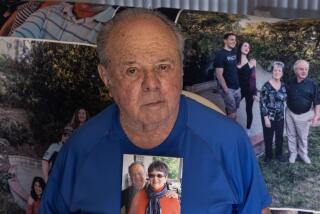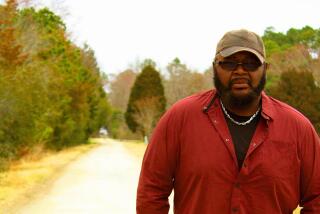Play Focuses on ‘Fighting’ Ty Cobb
Early in the off-Broadway production of “Cobb,” an elderly Ty Cobb pulls a revolver from under his robe to confront two earlier images of himself, each already equipped with his own firearm.
Nobody gets shot--this time.
Playwright Lee Blessing’s treatment of the Georgia Peach comes complete with all of Cobb’s warts, including the psychological scars left when his mother killed his father with a gun in an accident--if that’s what it was.
“The most hated man in baseball” is the way he described himself, and he wore that title like a badge of honor.
“I found him to be a fascinating combination of elements,” said Blessing, playwright in residence at Denison University in Granville, Ohio. “He was dedicated at being the best player in the game and held 90 records at one point. Yet in many ways, he was a failure as a human being.
“Before Ty Cobb, our image of baseball was a gentle, pastoral game. He changed that.”
Cobb played baseball with an attitude. He delighted in sharpening his spikes on the dugout steps, in full view of the other team, a silent message of intimidation.
“I took a rustic, folk-art form called baseball and applied the science of warfare to it,” the old Cobb declares proudly in Blessing’s play. “If I was destined to play a child’s game all my life, at least I was going to play it like an adult.”
Perhaps the thing that stuck in Cobb’s craw most was the suggestion that somebody else might have played baseball better than he did. That’s why he despised Babe Ruth, America’s home run hero, who was embraced as much as Cobb was hated. And that’s why Oscar Charleston plays a pivotal role in the play.
Charleston, a star of the old Negro Leagues, was billed as the “Black Ty Cobb,” barred from the majors because of his skin color, but equipped with the same tools as the white version. They even played the same position, center field.
Was Charleston as good? There is no barometer to measure the two but he is careful to point out that on three occasions when they might have competed head-to-head in exhibition games, Cobb pulled out.
In the play, Charleston haunts and taunts Cobb, reminding him that the Negro leagues also had Hall of Famers like Josh Gibson, Buck Leonard, Cool Papa Bell and Satchel Paige. How could he call himself the best without having gone up against them?
It is more fodder for the rage that burned inside the Georgia Peach, gnawing at him, driving him.
“The fights,” the middle-age Cobb says, needling the old man. “Tell them about the fights.”
Cobb had his share. Perhaps the most notorious came May 15, 1912, one month after the sinking of the Titanic, when a heckler in New York got the best of him. Enraged, he jumped into the stands at Highlander Field to confront the fan and pummeled him into submission. The fact that Claude Lueker was disabled and had no hands did not interfere with Cobb in the least.
Cobb was suspended and even though he was hardly beloved by his Detroit teammates, they knew how important he was to their team. So the Tigers responded by calling a wildcat strike, the first of what would become many walkouts in baseball history.
The American League warned management that it would be fined $5,000, no small fee in those days, for every game in which Detroit failed to field a team. With that incentive, the Tigers recruited some local amateurs to replace--we’ve heard that before, haven’t we?--the real players.
The replacement players included Billy Maharg, who was so embarrassed that he chose to spell his real name, Graham, backward. The pitcher would be Aloysius Travers, a seminary student, who could have used divine intervention against the Philadelphia Athletics.
The replacement Tigers lost the game 24-2. Travers went the distance, allowing all the runs and 26 hits. The performance earned him a place in the record book for most runs allowed in a game. He remains there today, right alongside Cobb.
More to Read
The biggest entertainment stories
Get our big stories about Hollywood, film, television, music, arts, culture and more right in your inbox as soon as they publish.
You may occasionally receive promotional content from the Los Angeles Times.










